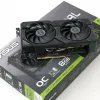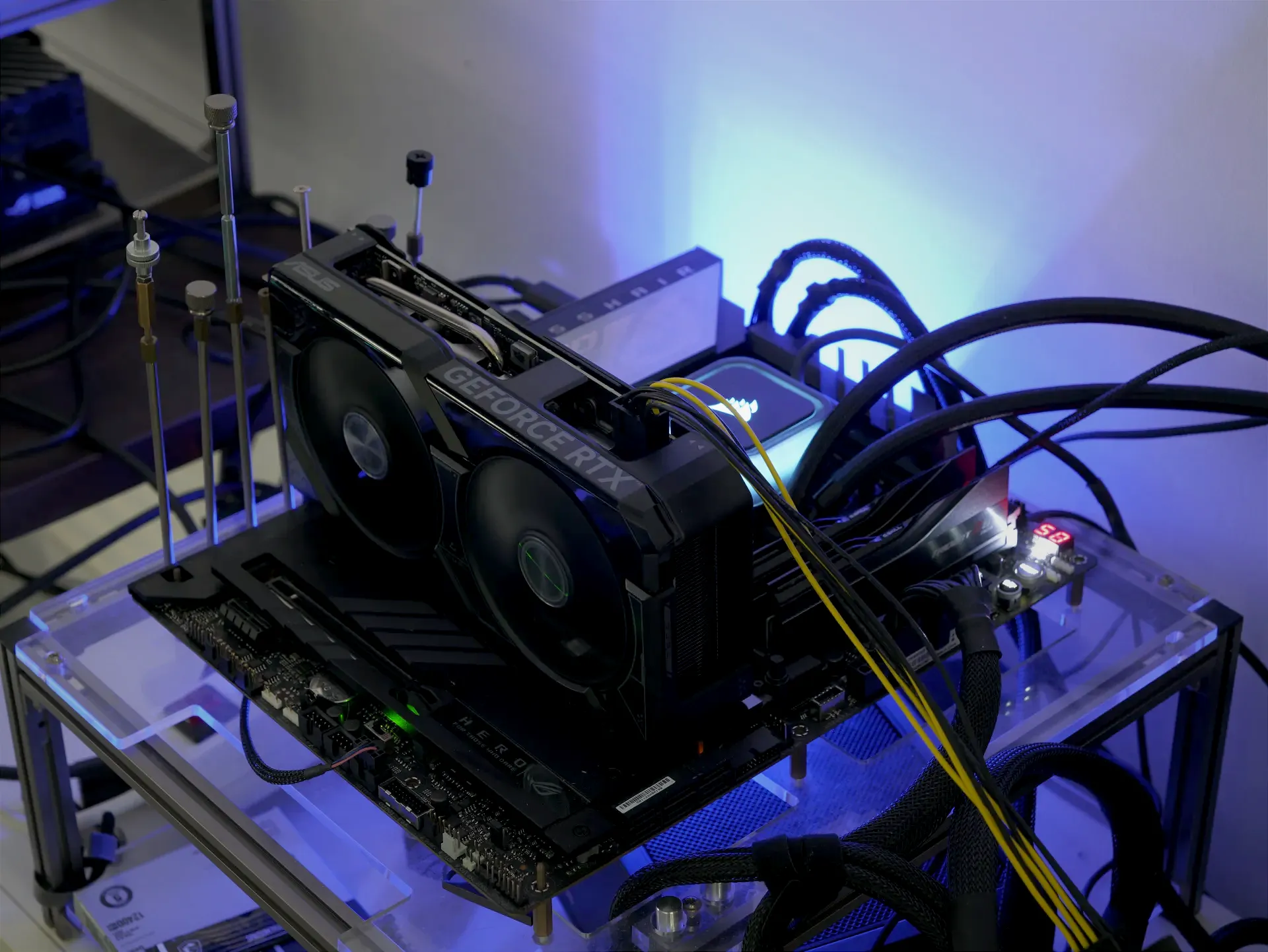Final words and conclusion
Asus introduced the Dual GeForce RTX 4060 Ti SSD OC Edition, which innovatively features an integrated SSD port alongside the GPU. This design allows for the co-occurrence of the graphics card and solid-state drive within a single unit, facilitating several technical benefits. An effective cooling system is in place to ensure that both the GPU and the integrated SSD maintain optimal temperatures, even under the load of basic synthetic benchmarks.
This extra slot provides a direct connection to the CPU, which can potentially improve data transfer rates. However, the utilization of this feature depends on the availability of PCI Express bifurcation, a function not universally supported by all motherboards. Users interested in the Asus Dual GeForce RTX 4060 Ti SSD OC Edition should listen to this first though, verify motherboard compatibility by checking your motherboard's UEFI/BIOS settings for the necessary option (look for bifurcation 8x/8x or 8x/4x/4x) on your main graphics card slot. If you do not have these options, the card is not worth the investment. Considering ASUS mainly support the latest motherboards, we're also a little puzzled as to why the innovation actually is needed. Most motherboards support three to five NVMe SSDs already.
Final words
ASUS offers an innovative concept by utilizing only four of the available lanes in their graphics card design for an M.2 SSD connection. Whether or not you really need the extra slot (with all motherboards these days having sometimes up to 5 of them) remains a bit of an unanswered question. Was there really a problem to solve in the first place? A typical situation where this concept would be of interest is in the use of mini-ITX motherboards, which are often limited to one or two M.2 SSD slots, necessitating additional slots for system expansion. Of course, additional cooling on that M2 slot is worth praise as well.
Unfortunately, the utilization of this design is exclusively dependent on the support for PCIe Bifurcation, a feature predominantly found on ASUS AMD motherboards. Looking at Intel-based systems, chipsets such as the H610 and B760 fall short due to Intel's inherent restrictions, leaving only a few alternatives like the premium-priced ROG Strix Z790-I Gaming motherboard, which retails close to 400 euros and supports PCIe Bifurcation. In contrast, AMD's AM5 socket offers wider chipset compatibility, yet ASUS's product range for this socket is a bit more limited.
The concept remains viable for mid-range cards as high-end cards simply will utilize all 16 lanes. An example would be the "ASUS Dual Radeon RX 7600 SSD Edition," which could theoretically exist. AMD's mid-range model operates with only eight lanes, thereby allowing the potential integration of one (or two) NVMe SSDs without compromising the card's performance or functionality. This approach could be adopted without any adverse effects, leveraging the available data lanes for enhanced storage solutions directly on the graphics card. In practice, the ASUS RTX 4060 Ti SSD Dual OC, while an inventive proposition, faces significant limitations in its current stage of deployment. Compatibility issues have been documented by us, even on ASUS motherboards that are deemed compatible, with missing options that hinder its intended performance. Resolving these issues through software BIOS updates remains uncertain, as does the prospect of persuading other motherboard manufacturers to adopt universal support for PCIe Bifurcation. We certainly did not have a problem-free run at all, bifurification is and will be an issue for many. We used the X670E HERO, a motherboard on the support list from ASUS, but setting up x8/x8 was not possible, only the x4/x4/x4/x4 RAID mode was available. If your 'compatible' motherboard has to run in that RAID mode, your graphics card also will toggle down to x4 mode, which is a no-go for us really. For us, PCIe Gen 5.0 did not kick in either, we maxed out at PCIe Gen 4.0 for some reason (and yes we used the very latest available BIOS).
Prevent Russian roulette: IF you opt to purchase this product, then first make sure your motherboard supports bifurcation at 8x/8x/ or 8x/4x/4x by visually checking it out in your BIOS. It's trivial to the full usability. ASUS supposedly would release this card at the same price as the regular DUAL OC card which would make this graphics card really interesting, however a quick lookup at street prices indicates something different at being 50 to 100 euros more expensive, and that to us does not make a lot of sense. In the end. The ASUS RTX 4060 Ti SSD Dual OC presents a novel thinking outside the box concept, yet its real-world application is met with quite a number of technical constraints in order to justify the current 50-100 EUR price premium.
- Download NVIDIA GeForce drivers
- Sign up to receive a notification when we publish a new article.
- Or go back to Guru3D's front page
- Hilbert, LOAD"*",8,1.


